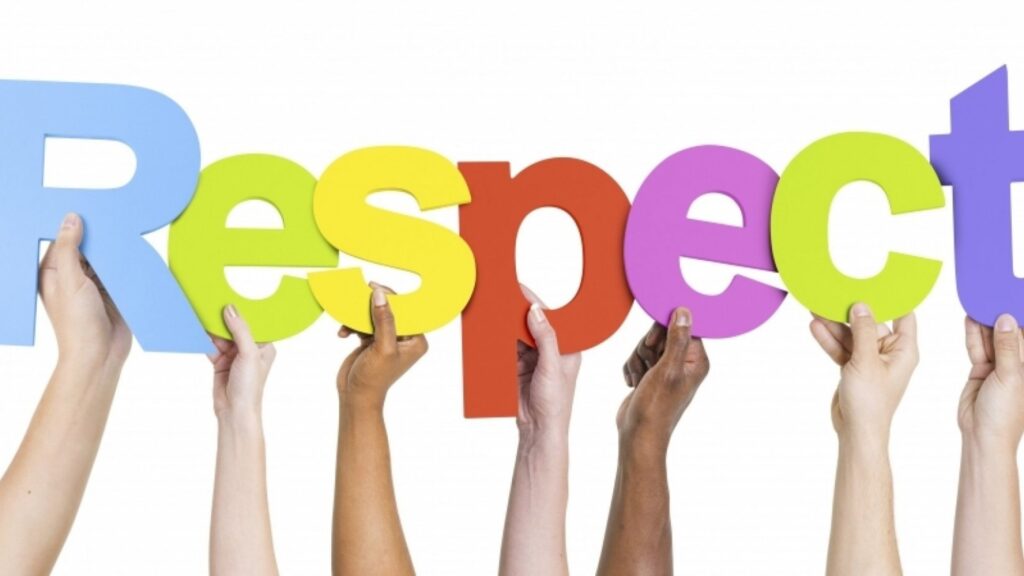Communication between teacher and student is not a new issue, but it is deeply debated, as due to the improper behavior of both parties some conflicts spoil the life of both the teacher and the student. Simply put, there are certain ethics of teacher-student communication, the rules of which must be followed to achieve effective communication.
Rules of communication between a student and teacher

Whether you like it or not, knowing how to talk to a teacher is not just desirable, but extremely necessary. Why? Elementary etiquette will more than once save you from the unpleasant situations you may encounter due to simple ignorance of how to communicate with a teacher. Friendly and trusting communication between a teacher and students consists of several factors: mutual respect; honesty; absence of familiarity.
Respect each other

This applies not only to the student but also to the teacher. It is not uncommon to see disrespectful attitudes towards students among the teaching staff. It is manifested in inappropriate behavior of the teacher in the classroom: making fun of the drawbacks, raising the voice, understating the marks, and other abuses, which teachers allow themselves only because the power is on their side. The student, in turn, is rude, disrupts classes, openly uses cheat sheets, does not prepare systematically, snaps, argues, and expresses his negative attitude to the teacher in every possible way. Such confrontation will not end with anything but wasted time and nerves. And the point is in the elementary respect for each other, which requires patience and wisdom from the older generation, as well as politeness and prudence from the younger ones.
Don’t cross the line of what you’re allowed to do

You can and should be friends with a teacher, and then the study will be a pleasure, and the endless fear will disappear, as well as a constraint in the presence of a teacher. But where is the thin line that separates the tactful friendship and insolent friendship? It is all about internal etiquette: if a student, seeing that with a teacher you can communicate informally and more relaxed, begins to behave as his “buddy”, then any respect for the boundaries allowed is out of the question. To communicate freely on topics of concern, to ask for advice and discuss personal problems – it does not mean to become a teacher’s “friend”, to whom you can “give a crab”. Be courteous and grateful for that attitude.
And here are some tips to help you establish the right communication with your teacher and get the results you want.
Ask good questions

Nothing makes a teacher happier than a lot of hands after class. This means that the students are interested in the topic and the teacher was able to explain the material in a way that is understandable and engages the students in the process. Try asking the teacher a question about the topic, and you’ll see how their attitude toward you changes.
Attend learning events outside of the curriculum

If the teacher announces an upcoming seminar, another university lecture, a meeting, and other events, try to attend. But show genuine interest: inadequate subservience is always evident.
Attend class regularly

Do not skip classes. If you fall ill or have another good reason for not coming, write to the teacher by e-mail, for example. Warn him and the teacher will understand that you care about his attitude and opinion about you. Again, a plus sign for your karma. Listen carefully – what if he tells you something interesting?
Be attentive

At lectures, seminars and other studies listen to the teacher carefully. If he sees that you whisper with classmates or “hang out” on the phone, he will not spend time on you, explaining the material. Yes, and it’s just unpleasant. Also, attentiveness saves when writing term papers, diplomas, and other works. A teacher will always help a responsible student rather than a slacker. This is a big advantage because you have a chance to do the task yourself, not to turn back to PaperHelpWriting again.
It should be noted that the requirements of etiquette are not absolute: compliance depends on the place, time, and circumstances. Behavior that is inappropriate in one place and circumstance may be appropriate in another place and circumstance. Student etiquette also varies under different circumstances. It consists of:
- Communication during the session implies the tensest problematic environment, causing the cohesion of students, for more fruitful implementation of academic activities. The etiquette of this period generates both mutual assistance between students during examinations and joy for the success of classmates.
- Communication during classes takes place in the presence of a teacher, and so it is rather discreet. Despite this, communication between students does not cease. Moreover, during classes, it is not only appropriate to have dialogues with students on the same or different topics, but it is also appropriate to do so.
- Talking during breaks gives more opportunities for interaction. These recesses are given as a break from lectures and students are free to move around the classroom and talk. During recess, it is considered appropriate to joke, talk on various topics, talk on the phone, etc.
- Free time communication is characterized as the most relaxed type of student interaction.

In addition, it will be useful for the student to know that the etiquette of interpersonal relations in any society consists of several elements:
- Good manners;
- Politeness;
- Tactfulness and empathy;
- Modesty.
It is important to note that the etiquette of interpersonal relations of students consists of the same elements, but they are expressed specifically.
- Manners are the way of acting, the external form of behavior, dealing with other people, the expressions used in speech, tone, intonation, a person’s characteristic gait, gestures, and even facial expressions.
In student society, good manners are considered to be the ability to control one’s actions, to communicate attentively and tactfully with others, as in any other society.

- Politeness can only be benevolent, as it is a manifestation of sincere, unselfish kindness toward all other people with whom the student has to meet in the process of study, in the house where he lives, in public places. One of the main elements of politeness students consider is the ability to remember names. With fellow students at the university, with many acquaintances in everyday life, politeness can pass into friendship, but organic benevolence towards people, in general, is the obligatory basis of politeness.
- Tactfulness, empathy is also a sense of measure, which should be observed in conversation, in personal relationships and relationships with teachers, the ability to feel the boundary beyond which as a result of our words and actions a person has undeserved offense, grief, and sometimes pain. The tactful student takes into account specific circumstances: differences in age, gender, social status, place of conversation, presence or absence of bystanders.
Respect for others is a prerequisite for tactfulness, even between good comrades. You may have encountered a situation where, at a seminar, a student carelessly throws “nonsense,” “garbage,” etc., during his or her classmates’ speeches.

Such behavior often becomes the reason that when he begins to speak, even his sensible judgments are met with coldness by the audience. It is said of such people: “Nature has given him so much respect for people that he has enough of it only for himself.
- Modesty in the student environment has gained almost no distinction. A modest student never tries to show he/she is better, more capable, or smarter than others; he/she does not emphasize his/her material superiority and does not demand any privileges, special facilities, or services. At the same time, modesty is not associated with either timidity or shyness.





![Calgary’s Hottest Neighborhoods for Luxury Homebuyers [2024]](https://thewashingtonote.com/wp-content/uploads/2024/04/Calgary-324x160.png)



